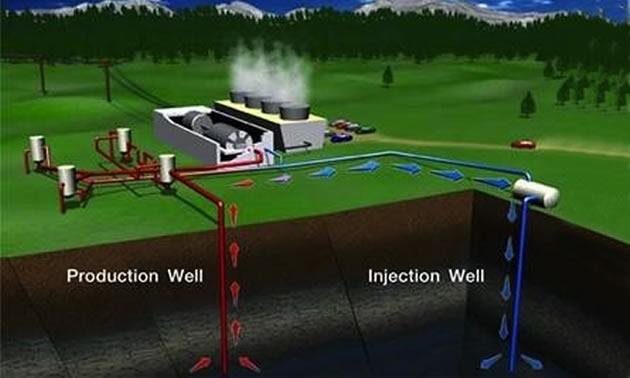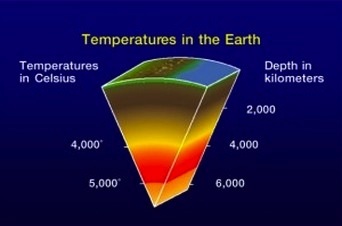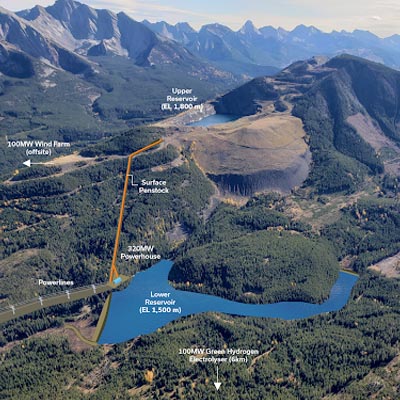Geothermal: the next energy frontier?
The Canadian Geothermal Association promotes a hot new energy source.

A simple geothermal power plant.
The Canadian government recently announced new R&D funding to investigate potential sources of natural geothermal energy—heat stored in the bowels of the earth—in Yukon Territory. In an announcement, Canadian Geothermal Energy Association (CanGEA) managing director Alison Thompson called the funding a “landmark opportunity” for all who live and work in the Yukon.
“The territory is now one step closer to realizing the potential that geothermal heat and power has for the economy, the environment, First Peoples, taxpayers and businesses," Thompson said.
CanGEA will work with the Yukon government and the Yukon Geological Survey to develop maps and reports that identify sources of renewable energy. A total of $168,000 is being invested in the project.
Whether it's in the Yukon or somewhere else, geothermal energy is derived from heat from the earth’s interior. The closer to the centre of the earth, the hotter the temperature. If three kilometres of the earth’s outer surface were somehow peeled away, the temperature would be 5,000 degrees Celsius at the core, and nearly hot enough on the surface to boil water.
Geothermal has many uses. In a power plant, the heat is used to drive a steam turbine, which creates electricity. Any leftover heat can be used in a variety of industrial heating applications, such as greenhouse food and flower production, pulp and paper manufacturing and snow and ice removal.
According to CanGEA, geothermal energy can tackle some of Canada’s greatest economic challenges.
“Geothermal power is clean, green, and reliable,” Thompson said. “It can operate at or near full capacity day and night, generating a consistent supply of power free from fuel costs or carbon emissions.
“Additionally, geothermal energy can effectively offset emissions when used in co-production with other resource development, such as oil and gas and mining.”

The association says the potential for geothermal energy in Canada is immense.
“It is estimated at over 5,000 megawatts in traditional shallow geothermal resources with currently available technology,” Thompson said. “Altogether, this level of geothermal energy production could create approximately 8,500 operations and maintenance jobs as well as 20,000 part-time construction jobs.”
In Canada, the biggest source of potential geothermal power is in the Canadian Cordillera, which stretches from British Columbia northward to the Yukon. There are also moderate sources of geothermal in Alberta and parts of Saskatchewan.
Canadian provincial and federal governments have provided off-and-on support to geothermal resource development for over 100 years. The first projects supported by the government date back to the late 1800s. When the transcontinental railroads were being pushed through the mountains in Alberta and B.C., several naturally occurring hot springs were discovered and subsequently developed into tourist attractions.
“Today Parks Canada is the largest user of geothermal in Canada,” said Thompson. “It has hot springs in Banff (Alberta), Harrison (B.C.) and Radium (B.C.), among other places.”
CanGEA says that when energy prices rose in the early 1980s, governments turned their attention to finding new and renewable sources of energy. For example, the federal government, through the Ministry of Natural Resources and the Geological Survey of Canada, undertook studies to explore the country's geothermal energy potential for electricity production. But as energy prices fell to affordable levels, this early exploratory work was abandoned and no formal report was published.
Although there are 15 different geothermal projects in Canada today, the country's geothermal power sector is still largely undeveloped, while interest in the industry continued to grow in other countries.
“For example, 51 per cent of all the energy produced in Kenya is geothermal,” Thompson said. “And geothermal started from nothing there just a few years ago. It's also a major source of energy in New Zealand, Mexico, Germany and the U.S., which is the largest producer of geothermal in the world.”
CanGEA says governments in Canada don't give the same level of support for capital investment in geothermal power as they do for fossil fuels, nuclear and hydroelectricity.
The association also says there is a lack of relevant regulation and policy in Canada. This makes geothermal development in this country challenging, because it is difficult to obtain permits and licenses for a resource that is not yet recognized by the jurisdiction.
Since 2004 there have been only a few government-regulated land sales open to geothermal companies, compared to monthly land auctions of petroleum and natural gas tenures.




